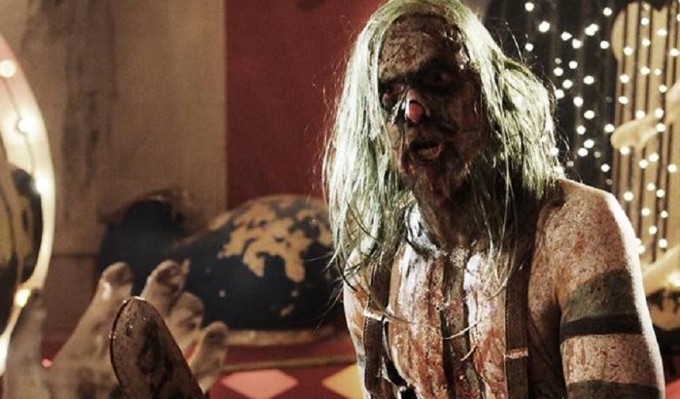Shock Without Awe, by Reed Lackey
24 Jan
Rob Zombie frustrates me. On one hand, he’s clearly a distinct and visionary director, with a strong command of imagery and a rich understanding of the foundational horror films of the 20s and 30s. With each new film announcement from him, I’m immediately curious. I reacted the same way when his recent death-match slasher 31 was announced. However, with every film of his besides The Devil’s Rejects, I’ve walked away disappointed.
31 (currently streaming exclusively on the AMC sub-service, Shudder) presents the same merits and problems as the rest of Zombie’s filmography. It presents an intriguing premise and a gauntlet-throwing opener. Richard Brake’s compelling character, Doom-Head, delivers a nasty and unsettling opening speech which properly sets the tone for the whole film. In these moments, as with the rest of his films, Zombie promises a lot. He promises a terrifying life-and-death contest in which five traveling carnival performers are kidnapped and must struggle to survive until midnight against a stream of murderous clowns. He promises a cast of imaginative and compelling characters. He also promises the possibility of a provocative exploration of humanity’s baser impulses and darkest desires.
What we ultimately get, is a collection of one-note characters in predictable scenarios, saturated by gore and violence to a point of almost immediate numbness. The makers of this murder game (whose title of 31 is never remotely explained) are inexplicably dressed as 19th century aristocrats, which might be scratching at a theme of class or oppression if it was ever remotely integral to the narrative. These elite maniacs kidnap our heroes (whose relationships and individual qualities are as plastic and superficial as they come) and force them to fight to the death against an increasingly menacing sequence of homicidal clowns (who easily comprise the most interesting elements of the film).
Three things primarily don’t work about 31: the script, the characters, and the handling of the inevitable violence. The structure of the script is solid, with well-defined narrative acts and deliberate tonal shifts. Unfortunately, Zombie has not yet developed the flavor for dialogue to justify the extent of the vulgarity he includes. When dialogue is this blue and mature, its often an opportunity to colorfully provide the perspectives of its characters or display some biting social commentary. Unfortunately, most of the dialogue could be said by any of the characters, making it a constant stream of profanity and obscenity that sounds more like flailing than like character enhancement.
Easily the most compelling character is Doom-Head, who dominates the opening moments and final third of the film. Richard Brake brings a charisma to the role that immediately invests the audience and elevates the static rhythm of mindless killings we’ve seen thus far. Unfortunately, Doom-Head is a first cousin to Heath Ledger’s Joker (in appearance and occasionally in sound), which steps dangerously close to feeling like the only provocative elements in 31 are transmitted from elsewhere.
It was said upon initial announcement that this was Zombie’s most brutal film yet, and that the film had to be cut three times to receive an R rating instead of an NC-17. Perhaps this can account for why the violence feels so plastic and uninspired, extreme as to be almost immediately unbelievable and, ultimately, numbing. When you don’t care much for the characters, can’t gleam much from the dialogue, and don’t have many pronounced reactions to the violence, you don’t have a subversive and provocative story: you’ve got a mess.
Despite my harsh words, I’m still rooting for Zombie. Perhaps I always will. There’s an undeniable visionary amidst all the noise. I’ll be looking forward to the day when I finally get to see one of his movies, if they’re ever made.




No comments yet